|
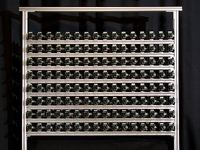 |
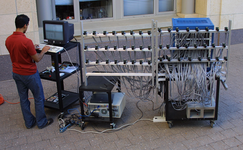 |
The Stanford Multi-Camera array consists of 100 VGA video cameras controlled by four computers. The array was built by Bennett Wilburn during his PhD [1]. It has per-camera hardware for real-time processing, allows cameras to be arranged in different configurations, and can even be transported outdoors. For more details, please visit the Stanford Multi-Camera Array website.
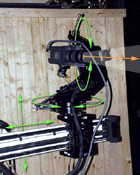 |
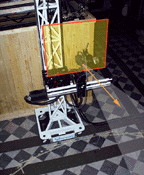 |
This computer-controlled gantry was used for 3D scanning in the Digital Michelangelo project. By mounting a digital camera instead of a 3D scanner, one can use this gantry for acquiring light fields. The two images above show the four degrees of freedom of the camera motion: translation in X and Y, along with nod and shake. The gantry motion is repeatable and sub-millimeter accurate.
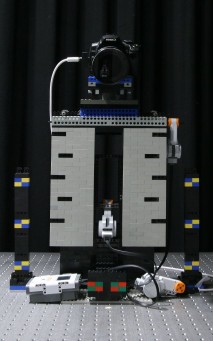 |
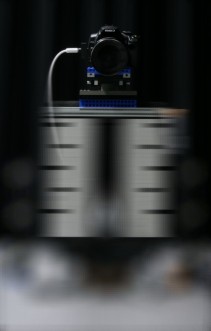 |
This simple Lego Mindstorms gantry demonstrates that you don't need fancy equipment to capture a light field - just a method to move a camera left, right, up, and down. The Mindstorms motors have rotary encoders, so with enough gearing down and solid construction this can be made to be very accurate and repeatable. The accuracy approaches that of the light field gantry, while remaining portable. One caveat is that there will always be some slop in the gearing, so it's a good idea to always approach a position from the same direction.
The camera used was a Canon Digital Rebel XTi, with a canon 10-22 mm lens. A wide angle lens is used to avoid the need to rotate the camera to keep the scene in view while translating the camera horizontally.
For this gantry, lego calibration objects were included in every scene (and then cropped out) to avoid the need for a second calibration run, at the expense of some resolution lost to cropping. The calibration objects can be seen in the above picture. The reference plane is defined by the yellow/blue corners, and the parallax measurements are done using the red/green corners. These corners are very easy to detect with the appropriate linear filters. There is some redundancy here, technically we only need four features for the reference plane and one feature for parallax.
This gantry was designed and built by
Andrew Adams.
Light Field Microscope
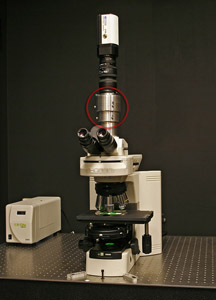 |
The light field microscope [9] is a conventional optical microscope with a lenslet array inserted at the intermediate image plane (inside the red circle in the image above). For more details, see the Stanford Light Field Microscopy project web page.
One light field acquisition device omitted from this list is Ren Ng's handheld plenoptic camera. Ren is currently commercializing this technology. See Refocus Imaging for more information. Eventually, we hope to host some of his light fields here as well.
© 2008 Stanford Graphics Laboratory
Created by Vaibhav Vaish. Updated by Andrew Adams.
Last update:
June 6, 2008 05:41:59 PM